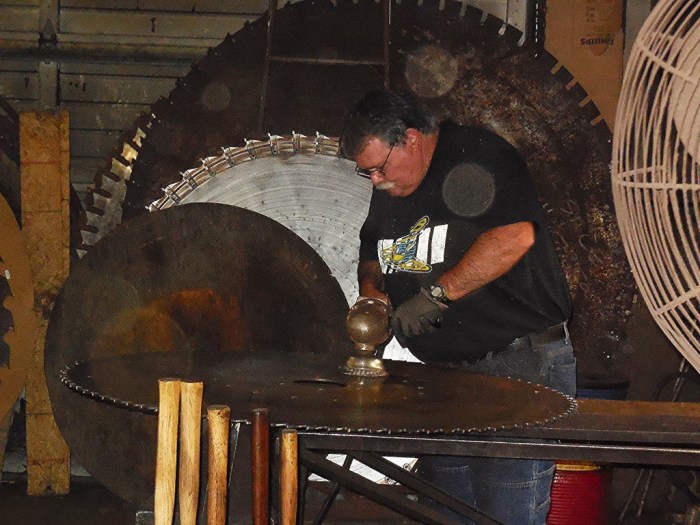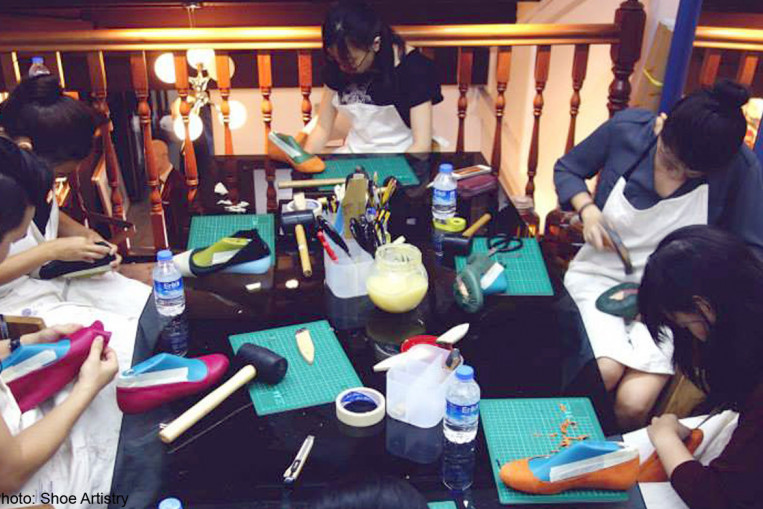Is floristry a dying trade? This question has been on the minds of many in the industry as the landscape of flower retail evolves. In this article, we’ll delve into the current state of the floristry industry, exploring market trends, consumer preferences, technological advancements, and the rise of DIY and home gardening.
We’ll also examine the emergence of niche markets, sustainability concerns, and industry projections to provide a comprehensive analysis of the future of floristry.
Market Trends and Industry Evolution
The floristry industry is undergoing significant changes due to evolving market trends and technological advancements. While traditional florists continue to play a role, online retailers and e-commerce platforms are reshaping the industry landscape.
The rise of e-commerce has enabled customers to purchase flowers and floral arrangements conveniently from the comfort of their homes. Online retailers offer a wide selection of products, competitive pricing, and often provide faster and more efficient delivery options. This has led to increased competition for traditional florists, who may struggle to compete with the convenience and affordability offered by online platforms.
Impact of Online Retailers
- Increased convenience for customers: Online retailers allow customers to order flowers and arrangements from anywhere, at any time, without having to visit a physical store.
- Wider product selection: Online platforms offer a vast selection of flowers and arrangements, including exotic and seasonal varieties that may not be readily available at traditional florists.
- Competitive pricing: Online retailers often offer competitive pricing and discounts, making flowers more accessible to a wider range of customers.
Decline of Traditional Florists
- Reduced foot traffic: The shift to online purchases has resulted in a decline in foot traffic at traditional florists, impacting their sales and profitability.
- Increased competition: Traditional florists face increased competition from online retailers, as well as from other florists offering online ordering options.
- Need for adaptation: Traditional florists need to adapt their business models and embrace e-commerce to remain competitive and meet the changing demands of customers.
Industry Growth and Decline
Data from industry reports indicates a decline in the number of traditional florists in recent years. However, the overall floristry industry is still growing, driven by the increasing demand for flowers for various occasions such as weddings, events, and home décor.
The growth is primarily driven by the online segment, while traditional florists are facing challenges in maintaining their market share.
Changing Consumer Habits and Preferences

Consumer behavior in the flower market has undergone a significant transformation in recent years. This shift has been driven by a combination of factors, including technological advancements, changing lifestyles, and evolving tastes.
One of the most notable changes has been the rise of online shopping. Consumers are increasingly turning to the internet to purchase flowers, drawn by the convenience, wider selection, and competitive pricing. Online retailers such as The Bouqs Co. and UrbanStems have made it easier than ever for consumers to order flowers and have them delivered to their doorstep.
Shift towards Subscription Services
Another trend in the flower market is the growing popularity of subscription services. These services allow consumers to receive regular deliveries of fresh flowers, often at a discounted price. Subscription services such as BloomsyBox and Bouqs provide consumers with a convenient way to brighten up their homes or offices with fresh flowers without the hassle of having to purchase them on a regular basis.
Changing Tastes and Preferences
The tastes and preferences of consumers have also evolved in recent years. Consumers are increasingly looking for unique and sustainable flower arrangements. They are also more likely to prefer flowers that are locally sourced and grown in an environmentally friendly manner.
Technological Advancements and Innovation

The floristry industry is embracing technology to enhance its practices and customer experience. From advanced flower preservation techniques to innovative delivery methods, technology is transforming the way florists operate and serve their clients.
Flower Preservation Advancements
Gone are the days of flowers wilting within a few days. Advanced preservation techniques now allow florists to extend the lifespan of blooms, preserving their beauty for weeks or even months.
- Freeze-drying:This process removes moisture from flowers, resulting in lightweight, durable blooms that retain their shape and color.
- Resin encapsulation:Flowers are encased in clear resin, creating stunning, three-dimensional keepsakes that last a lifetime.
- Glycerin preservation:Glycerin is absorbed into the stems and petals, keeping flowers flexible and vibrant for an extended period.
Innovative Delivery Methods
Technology is revolutionizing the way flowers are delivered, ensuring freshness and convenience.
- Subscription boxes:Customers can receive regular deliveries of fresh, seasonal blooms tailored to their preferences.
- Same-day delivery:Florists partner with delivery services to offer speedy delivery, ensuring flowers arrive at their destination within hours of being ordered.
- Floral ATMs:These automated kiosks allow customers to purchase and pick up flowers 24/7, providing convenient access to fresh blooms.
The Rise of DIY and Home Gardening

In recent years, there has been a surge in the popularity of do-it-yourself (DIY) flower arrangements and home gardening. This trend has been driven in part by the rise of social media and online tutorials, which have made it easier for people to learn how to grow and arrange flowers at home.
Social Media and Online Tutorials
Social media platforms such as Instagram and Pinterest have become a hub for DIY flower inspiration. Users share photos and videos of their own arrangements, as well as tutorials on how to create them. This has helped to spread the popularity of DIY floristry and has made it more accessible to people of all skill levels.
Niche Markets and Specialization

The floristry industry is evolving with the emergence of niche markets and specialized services. Businesses are catering to specific customer segments, offering tailored solutions and expertise.
Event Floristry
Event florists specialize in creating floral arrangements for special occasions such as weddings, corporate events, and parties. They collaborate with event planners and clients to design and execute stunning floral displays that enhance the atmosphere and create lasting memories.
Is floristry a dying trade? While the answer is not definitive, there are factors that may suggest a decline in the industry. One factor to consider is the increasing popularity of artificial flowers. With the advancements in technology, artificial flowers are becoming more realistic and affordable, posing a potential threat to the demand for natural flowers.
However, it’s important to note that artificial flowers cannot fully replicate the beauty and fragrance of natural flowers, and there remains a strong demand for fresh blooms in various occasions, such as weddings, funerals, and special events. Despite the challenges, the floristry industry continues to adapt and evolve.
Florists are finding innovative ways to cater to customer needs, such as offering online ordering, subscription services, and specialized arrangements. The americo term 100 vs 125 comparison highlights the need for businesses to adapt to changing market dynamics and customer preferences.
By embracing innovation and providing exceptional customer experiences, florists can ensure the longevity of their trade.
Wedding Floristry
Wedding floristry is a specialized niche that requires a deep understanding of bridal styles, venue requirements, and seasonal availability. Wedding florists work closely with brides and their families to create floral designs that complement the wedding theme, color palette, and overall vision.
Corporate Gifting
Corporate gifting is a growing segment within the floristry industry. Businesses are recognizing the value of sending floral arrangements to clients, employees, and partners as a way to express gratitude, build relationships, and promote brand recognition. Corporate gifting florists offer customized arrangements that align with the company’s brand identity and message.
Sustainability and Environmental Concerns

Sustainability has become an increasingly critical aspect of the floristry industry as consumers become more environmentally conscious. Florists are embracing eco-friendly practices to minimize their environmental impact and meet the growing demand for sustainable floral products.
Many florists prioritize sustainable sourcing by partnering with local growers who use environmentally friendly practices. They also opt for seasonal and locally grown flowers to reduce transportation emissions. Additionally, florists are adopting biodegradable packaging materials and reducing plastic waste.
Examples of Sustainable Florists
- Petal and Stemin London uses locally sourced flowers and biodegradable packaging.
- Floretin California focuses on sustainable farming practices and composts all floral waste.
- Blooms & Arrowsin New York City offers eco-friendly floral arrangements and workshops on sustainable floristry.
Future Outlook and Industry Projections: Is Floristry A Dying Trade
The future of floristry is a topic of ongoing discussion, with varying perspectives on its trajectory. Some industry experts predict a continued decline in traditional floristry, while others anticipate a resurgence driven by emerging trends and technological advancements.
Impact of Technology
Technological advancements, such as online marketplaces and mobile apps, have made it easier for customers to access a wider range of floral products and services. This convenience has led to increased competition and a shift towards online sales. Additionally, advances in artificial intelligence and robotics may automate certain tasks, potentially reducing the need for manual labor in floristry.
Changing Consumer Habits, Is floristry a dying trade
Consumer habits are also evolving, with a growing preference for sustainability and personalization. Customers are increasingly seeking out florists who prioritize eco-friendly practices and offer unique, customized floral arrangements that reflect their individual tastes. This shift has led to a growing demand for niche florists who specialize in specific styles or themes.
Balanced Perspective
While technology and changing consumer habits may pose challenges to traditional floristry, they also present opportunities for innovation and adaptation. By embracing new technologies and adapting to changing preferences, florists can continue to thrive in the future. The industry is expected to remain dynamic, with both challenges and opportunities coexisting.
Quick FAQs
Is floristry a dying trade?
The floristry industry is not dying but evolving. While traditional florists face challenges, niche markets and specialized services are providing opportunities for growth.
How has technology impacted the floristry industry?
Technology has transformed the floristry industry, enabling advancements in flower preservation, delivery methods, and the rise of online retailers and subscription services.
What is the impact of DIY and home gardening on florists?
DIY and home gardening have increased competition for florists, but they also present opportunities for collaboration and the sale of supplies.
How can florists adapt to changing consumer preferences?
Florists can adapt to changing consumer preferences by embracing online sales, offering subscription services, and catering to niche markets.